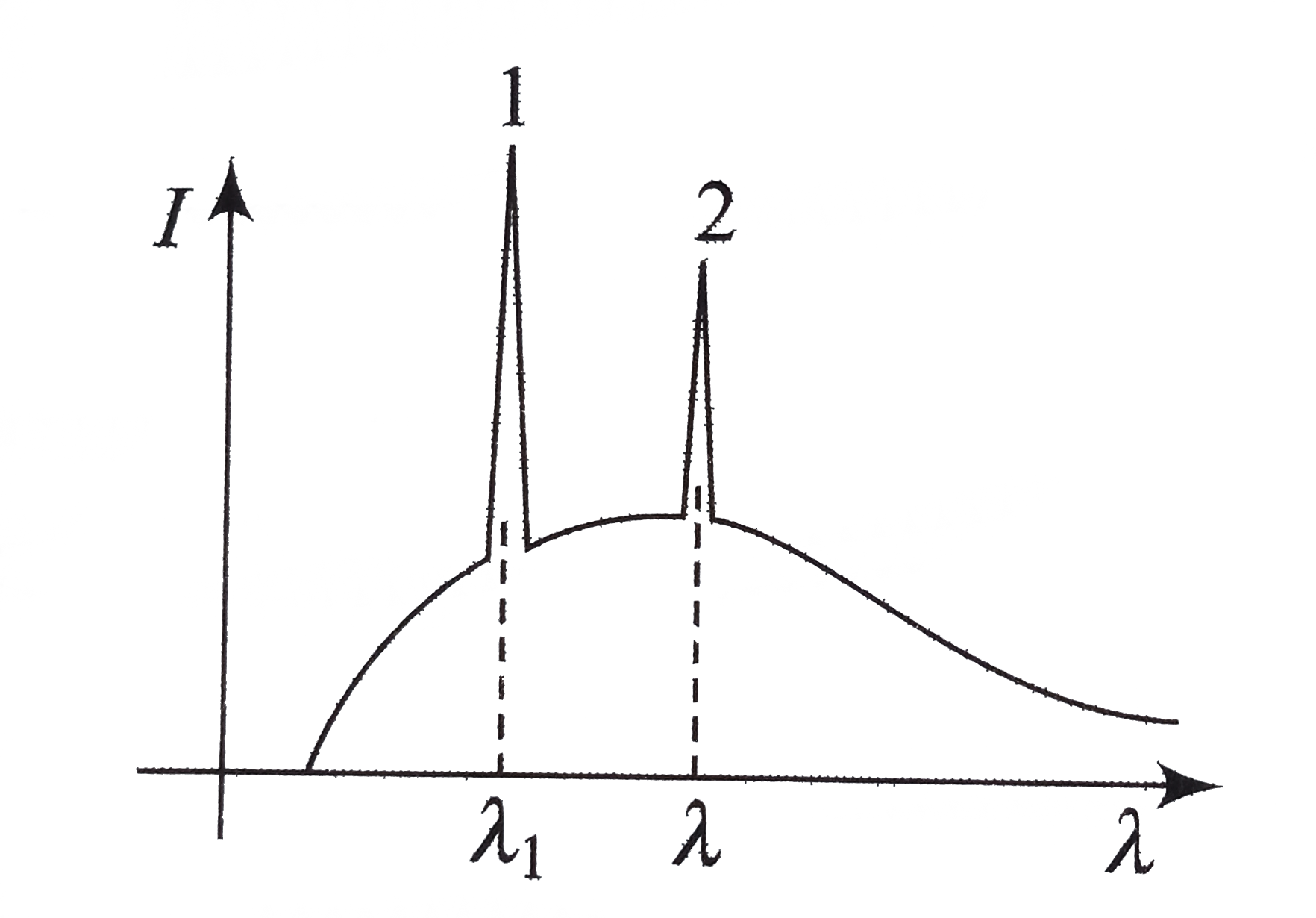If the frequency of Kα,Kβ and Lα , X-ray lines of a substance are vKα,vKβ, and vLβ
vKβ=vKα+vLα
vKβ=vKα−vLα
vKβ=vKαvLα
v2Kβ=vKα⋅vLα2
The correct Answer is:A
To solve the problem regarding the frequencies of the Kα, Kβ, and Lα X-ray lines of a substance, we can follow these steps:
1. Understanding the Energy Levels:
- The K and L series correspond to different energy levels of electrons in an atom. The K series refers to transitions involving the innermost shell (n=1), while the L series refers to transitions involving the second shell (n=2).
2. Identifying the Transitions:
- Kα transition occurs when an electron falls from the L shell (n=2) to the K shell (n=1).
- Kβ transition occurs when an electron falls from the M shell (n=3) to the K shell (n=1).
- Lα transition occurs when an electron falls from the M shell (n=3) to the L shell (n=2).
3. Using the Energy-Frequency Relation:
- The energy of a photon emitted during these transitions can be expressed as:
E=hν
where E is the energy, h is Planck's constant, and ν is the frequency.
4. Setting Up the Energy Equations:
- For Kβ, the energy can be expressed as:
EKβ=EKα+ELα
- In terms of frequency, this becomes:
hνKβ=hνKα+hνLα
5. Cancelling Planck's Constant:
- Since h is a common factor, we can cancel it out from both sides:
νKβ=νKα+νLα
6. Conclusion:
- The correct relation among the frequencies is:
νKβ=νKα+νLα
- Therefore, the correct option is A.
- The K and L series correspond to different energy levels of electrons in an atom. The K series refers to transitions involving the innermost shell (n=1), while the L series refers to transitions involving the second shell (n=2).
- Kα transition occurs when an electron falls from the L shell (n=2) to the K shell (n=1).
- Kβ transition occurs when an electron falls from the M shell (n=3) to the K shell (n=1).
- Lα transition occurs when an electron falls from the M shell (n=3) to the L shell (n=2).
- The energy of a photon emitted during these transitions can be expressed as:
E=hν
where E is the energy, h is Planck's constant, and ν is the frequency.
- For Kβ, the energy can be expressed as:
EKβ=EKα+ELα
- In terms of frequency, this becomes:
hνKβ=hνKα+hνLα
- Since h is a common factor, we can cancel it out from both sides:
νKβ=νKα+νLα
- The correct relation among the frequencies is:
νKβ=νKα+νLα
- Therefore, the correct option is A.
Topper's Solved these Questions
Similar Questions
Obtain a relation between the frequencies of Kα,Kβ and Lα line for a target metrial .
View SolutionIf λKα,λKβ and λLα are the wavelengths of Kα,Kβ and Lα lines, then
View SolutionLet λα',λβ,andλ'α denote the wavelength of the X-ray of the Kα,Kβ,andLα lines in the characteristic X-rays for a metal. Then.
View SolutionLet λα,λβ,andλ'α denote the wavelength of the X-ray of the Kα,Kβ,andLα lines in the characteristic X-rays for a metal. Then.
View SolutionThe frquencies of Kα,Kβ and Lα X-rays of a materail are γ1,γ2andγ3 respectively. Which of the following relation holds good?
View SolutionThe energy of an element with a vacancy in K-shell is 35.2 keV, in L-shell is 5.25 keV and in M-shell is 0.55 keV higher than the energy of the atom of with no vacancy. Find the frequency of Kα,KβandLα X-rays of that element.
View SolutionEvaluate: ∫1(x−α)(β−x)dx,(β>α)
View SolutionIn the Moseley relation, √v=a(Z−b) which will have the greater value for the constant a for Kα or Kβ transition?
View SolutionIn figure find which is KaandLα'

View SolutionFor a cartain metal, the K obsorption edge is at 0.72Å. The wavelength of Kα,Kβ.AndKγ lines of of K series are 0.210Å,0.192Å,and0.180Å,respectively.Thee¬giesofK, L and MorbitareE_(K), E_(L) and E_(M), respectively. Then
View Solution
